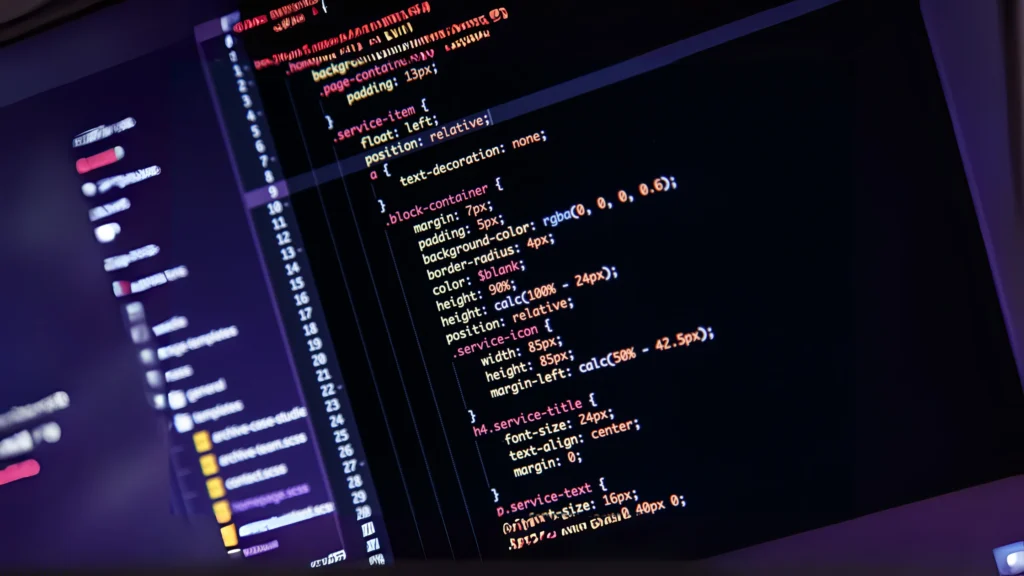Uptime Kuma is a special tool for keeping an eye on websites and servers. Imagine it like a guardian that watches over your online stuff to make sure everything is working smoothly. One cool thing it can do is send you emails to let you know if something’s not quite right. These emails are called “Email Notifications.”
Why Email Notifications Matter
Now, let’s talk about why these email notifications are important. When you have a website or a server, you want to know if something goes wrong with them. Email notifications help with that. They’re like instant alerts that pop up in your email inbox, saying, “Hey, something’s not working as it should!”
Why does this matter? Well, imagine you run a website where you sell things, and suddenly, the site stops working. Without email notifications, you might not know about the problem until your customers start complaining or you notice it yourself. With email notifications, you get a heads-up right away.
This is super important because it lets you fix the problem fast. The faster you know, the quicker you can take action to get things back on track. And that’s a big deal because downtime (when your website isn’t working) can cost you money and make your visitors unhappy.
Email notifications are not just about saying, “Something’s wrong.” They can also give you extra details. For example, they might tell you what kind of problem it is or where it’s happening. This extra info helps you figure out what’s going on and how to fix it. So, they’re like a detective’s clue that helps you solve the mystery of the website trouble.
Types of Email Notifications
1. Notifications for Downtime
Downtime is when a website or server isn’t working right or is completely turned off. This can happen because of things like fixing the server, problems with the internet, or mistakes in the computer programs.
Why Downtime Notifications Are Important
Getting messages about downtime is a big deal because it tells you right away if something’s wrong with your website or server. This helps you fix the problem quickly and stop it from causing trouble. Downtime can mean losing money or harming your good name. These notifications also give you details about the problem, like what kind of mistake it is or where it’s happening, so you can find a solution faster.
2. Notifications for Uptime Status
Uptime status means your website or server is working fine, and people can use it without any issues. It’s when there’s no downtime or problems that stop it from working.
Why It’s Good to Know About Uptime Status
Knowing about uptime status is important because it helps you keep an eye on your website or server. This way, you can make sure everything is working as it should. You can find and fix small problems before they turn into big ones. It’s like checking your bike to make sure it’s okay before a big ride. Also, watching uptime status can show you if there are any patterns or trends in how your website or server works. This can help you make it even better and give users a great experience.
3. Notifications for Account Activity
Account activity notifications are messages you get when something happens on your Uptime Kuma account. This could be when a new person joins your account or if someone changes your account settings.
Why Keeping an Eye on Account Activity Is Important
It’s smart to watch what’s happening with your account because it helps you know if everything’s okay. If you see something strange, it could be a sign that someone is trying to get into your account without permission. Watching account activity also helps you see any changes to your account settings. You want to make sure your account is set up the right way for what you need. It’s like keeping an eye on your treehouse to make sure no one’s climbing up when they shouldn’t be.
Read also: Checkmk vs. Uptime Kuma: Which Is The Right Monitoring Tool?
Customization and Settings
How to Access Email Notification Settings
To get to your email notification settings, follow these steps in Uptime Kuma:
1. Go to your profile settings.
2. Find the “Notifications” tab.
3. Here, you’ll see a list of different types of emails you can receive.
You can choose which notifications you want by checking the boxes next to the ones you want to get and leaving the boxes empty for the ones you don’t want.
Explanation of Customization Options
1. Frequency of Notifications
You can decide how often you get email notifications. For example, you can get them right away when something goes wrong, or you can choose to get them at specific times, like every hour or once a day.
2. Selective Notification Types
You can also pick the kinds of notifications you receive. For instance, you can choose to be informed about downtime, when your website isn’t working, or about your account’s activity. You can even select particular types of problems or errors.
Importance of Tailoring Notifications to Individual Preferences
Customizing your notifications is important because it helps you get the right information the way you want it. By choosing how often and what types of emails you receive, you can make sure you’re alerted immediately if something goes wrong with your website or server. Plus, you won’t be bothered by notifications that don’t matter to you.
Also, customizing notifications can be super helpful when you need to fix issues. You’ll have details about the problem, like the kind of error or where the problem is, which makes troubleshooting easier.
Read also: Monitoring Discord Bot Uptime Made Easy with Uptime Kuma
Benefits of Uptime Kuma Email Notifications
Ensuring Website Reliability
Uptime Kuma email notifications are super helpful because they make sure your website is reliable. This means your website works well and doesn’t have problems.
When something goes wrong with your website or the server it’s on, these email notifications let you know right away. This helps you fix the problem fast and keeps your website running smoothly.
Quick action is essential because it stops your website from going offline. If your site is down, it can lead to losing money or damaging your online image. These email alerts prevent that from happening.
Not only do you find out when there’s an issue, but the emails also give you details about the problem. They tell you what kind of mistake happened or where the issue is. This info helps you figure out what went wrong and how to fix it.
Preventing Potential Issues
Uptime Kuma email notifications are like a watchful eye. They keep an eye on your website all the time and tell you if anything’s not right.
If a small problem pops up, you’ll get an email. This means you can fix it before it turns into a huge headache. No one likes big problems, right?
Also, these notifications help you see if there’s a pattern of issues happening often. By noticing these patterns, you can make your website or server better, so it works faster and gives a better experience to your visitors.
Getting Info and Reacting Quickly
Uptime Kuma lets you decide how often you get these email notifications and what kind of problems they tell you about. You’re in control!
This way, you’ll always know as soon as something’s not right with your website or server, and you won’t get bothered by emails that don’t matter to you.
These emails don’t just say, “Hey, there’s a problem.” They tell you exactly what’s wrong and where it’s happening. This helps you fix the problem faster.
You can even make the emails show specific details about the problem. This means you can take action right away to sort things out.
So, in a nutshell, Uptime Kuma email notifications are like a super helper for your website.
They keep it running smoothly, prevent big troubles, and make sure you know what’s happening, so you can react fast. It’s like having a superhero watching over your website 24/7!
Tips for Managing Email Notifications
Email notifications can sometimes be too much. They can even make us less productive. But here’s how to make email notifications work for you.
1. Avoiding Email Overload
Email notifications are like little messages that pop up in your email. Sometimes, they can be too many and make you feel overwhelmed. When that happens, it’s not good for getting things done.
But don’t worry, you can control them. You can choose how often you get these notifications and what kind of messages you want to see.
You can also stop some of these notifications that are not really important. This way, you’ll only see the emails that matter most to you.
By doing this, you can stay informed without having too many emails in your inbox.
2. The Role of Email Filters
Email filters are like helpers for your email. They can keep your inbox nice and tidy.
You can make these filters to organize your emails automatically. They look at who sent the email, what the email is about, or what’s inside it.
Then, they put the emails in different folders based on these things. This makes it easier to find important emails and not get distracted by the not-so-important ones.
Filters can also help you get rid of emails that you don’t need. They can delete or save them in a special place.
So, email filters are like your personal email assistants.
3. Keeping Email Contact Information Updated
It’s really important to keep your email information up-to-date. This helps you get notifications when something is wrong with your website or server.
Imagine if your phone number changed, and nobody knew it. You’d miss important calls. The same goes for your email address.
So, check your email settings now and then. Make sure your email address is right.
Also, make sure your email provider isn’t stopping emails from Uptime Kuma. You want to get those important notifications.
When you keep your email info updated, you’ll know right away if something’s not right with your website or server.
Troubleshooting Email Notification Issues
1. Common Problems and Solutions
Email notifications in Uptime Kuma can sometimes give us a bit of trouble. Here are some common problems and how to fix them:
i). Not Receiving Notifications: If you’re not getting notifications, one thing to check is your notification settings. Make sure they are set to “Enable.” That means they should be turned on.
ii). Getting Too Many Notifications: On the flip side, if you’re getting bombarded with too many notifications, it can be annoying. So, check your settings again. Make sure they are set to the right level of notifications.
iii). Emails Going to Junk or Spam: Sometimes, your email system might think these notifications are spam. So, have a look in your junk or spam folder in your email to see if they ended up there.
iv). Test with Gmail: To be sure the emails are working, you can change your email address to a Gmail one temporarily. Send yourself a notification. If it shows up in your Gmail inbox, great! Change your email back to what it was, and then you might need to talk to your email provider to make sure they’re not blocking the emails.
2. How to Get Help
If you’re still having problems with Uptime Kuma email notifications, don’t worry. You can get some help:
i). Contact Support: You can talk to the Uptime Kuma support team. You can find them on their website or send them an email at support@teamwork.com. They’re there to help you out.
ii). Check the Documentation: Sometimes, the answers are in the Uptime Kuma user guide. It’s like a book of instructions. You might find a solution there.
iii). Community Forums: Other people who use Uptime Kuma might have had the same problem. You can look in the Uptime Kuma community forums. Sometimes, they share their tips and tricks for fixing things.
So, don’t get frustrated. There are ways to make those email notifications work just right for you!
Read also: Uptime Kuma Badges: Showcase Your Reliability
Conclusion
Why Uptime Kuma Email Notifications Matter
Uptime Kuma’s email notifications are super important for keeping an eye on your websites and servers. They help you know what’s happening and take quick action if something goes wrong. By choosing how often and what kind of notifications you get, you can make sure you’re alerted right away when there’s a problem. You can also avoid getting too many messages that don’t matter to you. Plus, these emails can be customized to tell you exactly what’s wrong, which makes fixing things easier.
How to Get the Most Out of Email Notifications
We want to make sure you get the most out of Uptime Kuma email notifications. You can do this by setting up your notifications just the way you like them and making sure your email info is correct. That way, you can stay in the know without getting too many emails that clog up your inbox. If you ever run into problems with these emails, you can sort things out by checking your notification settings, testing if the emails are coming through, or reaching out to support for help. By using Uptime Kuma email notifications to the max, you can keep your websites and servers reliable and avoid potential issues.






